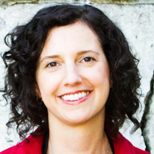Called the ARoNite system, it’s being tested in Rancho Cucamonga, Calif., a town near the agricultural communities east of Los Angeles. “We’re pumping and treating the water but are not putting it into the municipal system yet because we haven’t gotten the final approval from the California Department of Public Health,” says John Kaestle, the company’s CEO.
A $1 million to $1.5 million system could serve 3,000 to 10,000 people, says David Friese, technology director for ARoNite.
The economics of such a technology can work in a place like California, where water supplies are extremely tight. “Where you have a very high cost of water acquisition, like in Southern California, then treating the water and making it potable makes sense,” says Kaestle.
However, in places like the Mississippi River watershed, there may be lower-cost alternatives to treating nitrate-polluted water, he points out. These include dilution: Water treatment plants often mix in water from uncontaminated sources to get nitrate levels below the local public health threshold.
Signs of Hope
Seville has been fighting for clean water since 2007, and in 2010, its activists were largely ignored, spinning their wheels against bureaucracy. Now there are new signs of hope.
The Human Right to Water Act, the governor’s focus group for disadvantaged communities and the recommendations in the State Water Board report are all directing fresh prioritization and resources toward meeting the needs of people who have long been stuck with polluted water. The focus group dedicated at least $20 million per year to deliver safe water to the 2.5 million people affected in Salinas and Tulare counties.
All the attention should make it easier for small communities to access county and state money, says Herrera. For Seville, it already has. The town has secured funding via Tulare County from the California Department of Public Health to study possible clean water solutions for Seville, select one and conduct a feasibility study, says Herrera. After 18 months, the county can choose an option and obtain additional money for planning and construction.
One possibility is to partner with a neighboring community, Yettem, to consolidate resources, governance and infrastructure. The county has also secured funding for a regional study that will consider how to address the long-term needs of the entire region. Several other tiny communities are located nearby. “Like Seville, they have no clean water,” says Herrera. Another possibility is to partner with the irrigation district to bring in surface water and treat it centrally for all these communities.
“We’ve seen movement and changes,” says Herrera. “It will hopefully keep getting better if the communities continue to stay engaged and hold decision makers accountable.”
Herrera is pleased that things are moving. “But we’re still looking at another three years before the community sees a permanent clean water, best case scenario,” says Herrera.
In the meantime, the people of Seville shouldn’t have to drink tainted water for too much longer. At the governor’s drinking water stakeholder group, Herrera’s organization and other advocates recommended that the state allow emergency funds from the Department of Public Health to be used for interim projects. That policy took effect in January 2013.
Tulare Country is currently seeking these funds to set up an interim solution to get Seville residents clean water until a longer term solution can be enacted. For example, the county might purchase and install a water dispensing machine at the local elementary school for both students and residents. The machine would use reverse osmosis to filter contaminants from Seville’s well and allow residents to take home clean water in five-gallon jugs.
“We’ve seen movement and changes,” says Herrera. “It will hopefully keep getting better if the communities continue to stay engaged and hold decision makers accountable.”
Ultimately to achieve the goals of the Clean Water Act and Safe Drinking Water Act, the U.S. will have to regulate agricultural pollution. If California succeeds, perhaps the country will follow.
Related Posts
Ensia shares solutions-focused stories free of charge through our online magazine and partner media. That means audiences around the world have ready access to stories that can — and do — help them shape a better future. If you value our work, please show your support today.
Yes, I'll support Ensia!



